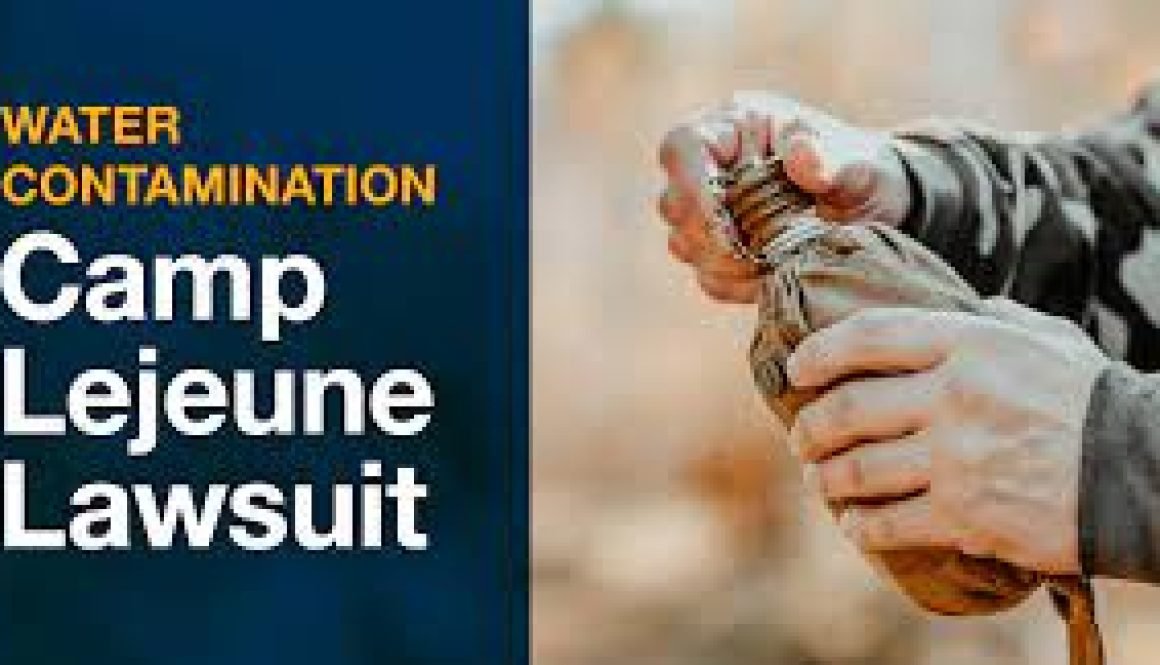How Camp Lejeune Lawsuits Highlight the Complexities of Toxic Torts
The Camp Lejeune water contamination incident spanned several decades and exposed countless military personnel and their families to toxic chemicals. Chemical discharges from both on- and off-base sources contributed to this environmental catastrophe.
According to the ATSDR, the contamination from the spillage has been linked to life-threatening conditions. These include several types of cancer, neurological diseases, and developmental disorders. These studies have caused outraged victims to file a wave of Camp Lejeune lawsuits.
These lawsuits have highlighted the complicated nature of toxic tort litigation. In this article, we will explore the main elements of Camp Lejeune lawsuits. We also will shed light on the complexities associated with holding responsible parties accountable.
An Overview of the Contamination
Water pollution at Camp Lejeune began in the 1950s and lasted for decades. The initial source of contamination included on-base spills and leaks, coupled with off-base businesses mishandling hazardous chemicals.
EPA notes that an off-base dry cleaner, ABC One-Hour Cleaners, played a significant role in polluting the groundwater. Their improper disposal of waste chemicals was identified as a major source of contaminants on the site. This contamination affected the health of military personnel and their families while raising questions about accountability and regulatory oversight. This added layers of complexity to the legal proceedings.
Identifying the Contaminants
The Camp Lejeune water supply had four major contaminants: trichloroethylene (TCE), perchloroethylene (PCE), benzene, and vinyl chloride. These volatile organic compounds are known to pose severe health risks, underlining the gravity of the contamination issue.
Proving the direct link between these contaminants and specific health conditions in court poses a significant challenge. It requires rigorous scientific analysis and expert testimony.
Health Conditions Linked to Camp Lejeune
As mentioned earlier, ATSDR has associated Camp Lejeune water contamination with a wide range of health conditions. This lengthy list of diseases highlights the severe effects of toxic exposure on the victims and their loved ones.
The diversity of health conditions linked to Camp Lejeune contamination highlights the need for comprehensive medical evaluations. It also emphasizes the need for expert medical opinions in each individual case.
Legal Recourse: Camp Lejeune Lawsuits
In response to the crisis caused by the contamination, Camp Lejeune lawsuits have emerged as a means of seeking justice. Individuals who meet specific exposure criteria are eligible to file claims and seek compensation for their illnesses.
Navigating the legal landscape of these cases is complex. TorHoerman Law recommends approaching skilled attorneys who specialize in environmental litigation and toxic torts.
VA Benefits and Compensation
Veterans and their families impacted by Camp Lejeune water contamination may be eligible for VA benefits, including disability compensation. Filing a Camp Lejeune lawsuit does not preclude individuals from claiming these benefits, offering a dual avenue for relief.
However, coordinating VA claims with legal actions can be challenging. In order to successfully navigate the litigation, it is essential to get advice from attorneys who specialize in similar cases.
Ongoing Developments
As of the latest updates, Camp Lejeune lawsuits are progressing rather slowly. Thousands of cases are pending in the Eastern District of North Carolina. Recent developments include the appointment of lead counsel. Additionally, there has been an influx of lawsuits filed following the enactment of the Camp Lejeune Justice Act of 2022.
As noted in a post by CBS News, nearly 100,000 claims have been filed since the passage of CLJA. However, there has been a delay in processing these claims. Advocates and attorneys have criticized the behavior, labeling it a “classic delay tactic.” Consequently, there have been no concrete estimates for Camp Lejeune water contamination settlement amounts due to pending case evaluations.
The sheer volume of cases and the involvement of various legal professionals highlight the magnitude of this environmental litigation. It also underlines the collective effort to secure justice for the affected individuals and their families.
The Path Ahead
The Camp Lejeune water contamination saga exemplifies the intricate nature of toxic tort litigation. It is clear that identifying responsible parties, proving causation, and ensuring fair compensation present significant challenges in these cases.
However, these legal battles will continue. They will serve as a powerful reminder of the consequences of environmental negligence and the determined pursuit of justice by those affected. A just resolution for Camp Lejeune victims hinges on sustained collaboration among the legal system, healthcare experts, and regulatory agencies.
Final Word
The Camp Lejeune water contamination incident stands as a stark testament to the complexities of toxic tort litigation. It underscores the challenges in pinpointing responsibility, establishing causation, and securing fair compensation for affected individuals and families.
The extensive range of health conditions linked to the contamination highlights the need for rigorous scientific analysis and expert testimony. While progress in the lawsuits has been marked by delays, the collective determination to seek justice remains unwavering.
